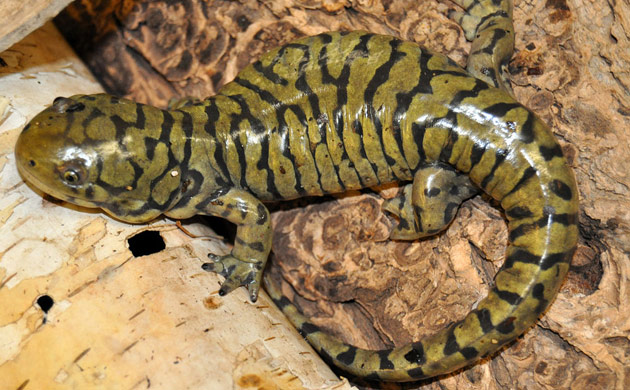I've been looking into what I want to get after I move Rocza to his new tank. It's probably going to be arboreal and tropical, since that's what I'm set up for. In truth, I'm not looking to break the bank on this critter either; it will most likely be a pair or a trio of anoles (
Anolis carolinensis or
sagrei), depending on how much space they require.
Anolis carolinensis is the typical green anole while
Anolis sagrei is the brown or "bahaman" anole. These are the little guys that first sparked my interest, or at least the first herp I tried to get when I was a wee little lad. I never ended up getting one, probably for the same reasons I can't own a frog or a turtle now. In all fairness to my parents, it's very likely I would have accidentally killed the thing after a week, but I didn't see it that way back then, obviously.
 |
Image from
http://www.tpwd.state.tx.us/learning/webcasts/urban/urban.phtml |
According to PetSmart's pamphlets, crested geckos (
Rhacodactylus ciliatus) is beginner level shit. These guys are at least on the same level, if not lower. Maybe it's just because I've seen them for years, but I just feel like they're very easy to raise. Anoles have been in the pet trade for ages, after all. You always see them in these huge groups at the pet store, just chilling out; brown and green anoles living together in their little utopian society.
Well, maybe not quite so technicolour, but still.
I wouldn't mind a mix, myself. It would add a little variety to the tank. The only iffy thing about it is that they are exclusively carnivorous, so I would have to leave crickets in the tank. This frustrates me, since they can get behind the foam backdrop and stay tucked away, chirping into the wee hours of the morning. The only saving grace is that the crickets will probably have to be smalls; too young to be able to chirp. Then again, I'm probably just over thinking this. A war-band of fleet-footed anoles is surely a match for a couple small crickets.
I have also been putting some thought into making an aquatic/terrestrial hybrid tank. I've drawn a couple sketches for a vertical hybrid tank, but... I can't get frogs with my current living condition, so there aren't many options of creatures to put in it.
 |
Image from
http://www.reptilegardens.com/amphibians-bugs/amphibians/salamanders.php |
So since I can't get frogs
because I don't have my own house or turtles
because my parents don't want "that aquarium smell", I've decided to revisit salamanders and newts (
Caudata), like the tiger salamander (
Ambystoma tigrinum) to the right here. What's cool about salamanders is that they have larval stages where they are completely aquatic, like frog tadpoles. I don't think I'd get one that young, since I don't think a hybrid tank would have enough water, unless it's really big. Who knows fur sure, though; I may decide to get a pair of larva and see them through to adulthood! This setup would definitely need to be horizontal; most salamanders aren't arboreal. That's not to say I couldn't build up, I'd just have to make sure I give them a nice easy incline. I'll give it some more though.
 |
| Image from http://firesalamanders.weebly.com/ |
Another nifty thing about most of the common salamander species is that they not only live in my type of climate, some are even native species. That give me a much bigger range of plants to chose from, and easy access to them. No need to pay 5.00$/lb. of drift wood or mopani wood when I can go out and find tree branches and stones from habitats used by wild salamanders. I should point out that the salamander I really want is native to Europe; the fire salamander (
Salamandra salamandra). They still live in similar habitats; clean running water with plenty of mossy cover and places to burrow. Maybe it's only since I've been studying evolution in biology (note that I know use Latin names as well as common), but I find that salamanders have a sort of primal beauty to them. Amphibians were the first vertebrates to crawl up onto land, after all. Plus, I have a penchant for dangerous animals; they're usually much more interesting than their safe, gentile cousins. Clear example: monarch butterfly vs. some... shitty, white, non-toxic butterfly. These fire salamanders produce samandarin, which is a powerful neurotoxin they produce in their skin which causes muscle convulsion and hyperventilation in vertebrates. How cool is that?! Finally, a reason to put a lock on the cage door!
I'll write up another post soon (hopefully) on some research into making moss which I found while looking over some
caudata sources.



No comments:
Post a Comment